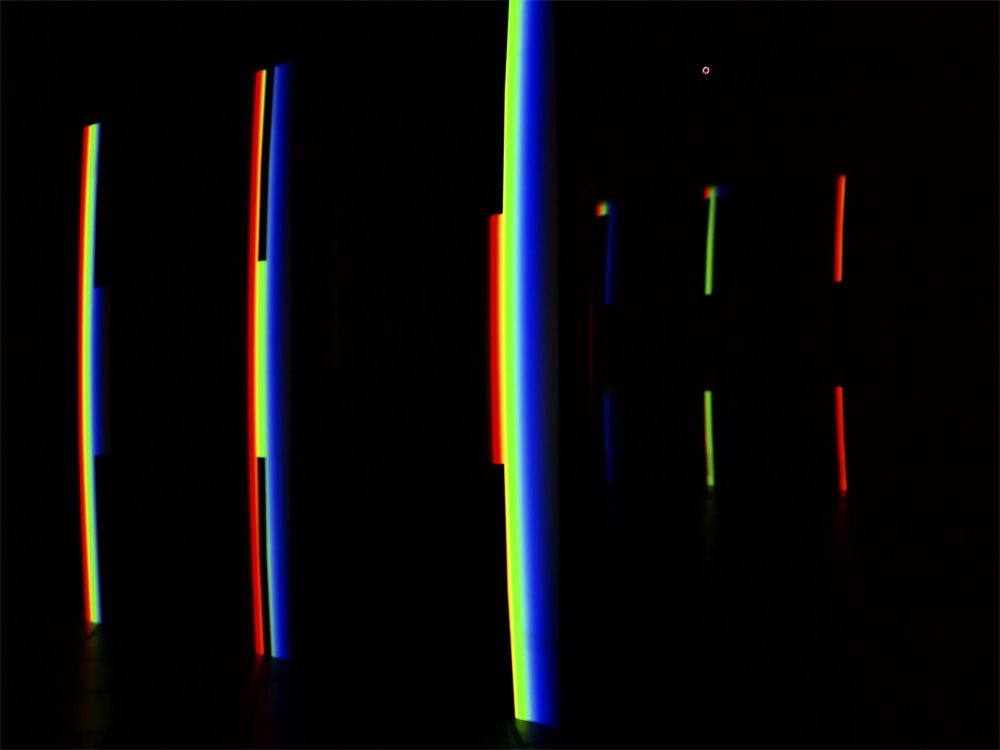
Ingo Nussbaumer is prominent in the Austrian contemporary art scene as a representative of conceptual, or inabstract painting. The artist has also garnered international attention with his highly developed experimental phenomenology and colour research.
Ingo Nussbaumer’s solo exhibition to open at Vartai gallery in the end of October presents selected works by the artist – an installation dedicated to the dispersion of light into the colour spectrum, paintings of imaginary objects, and 15 watercolours.
Art and science, painting practice and vision experiments are closely related in Nussbaumer’s work. To the author, a painting is a chromatic sentence, a physical expression of a visual idea – a spontaneous image or a spectacle consistently articulated in the creative process. Such a painting demands knowledgeable viewing, yet, according to Nussbaumer, it is not purely rational, as it is based on a subjective sensory phenomenon – the visual sense of colour. Thinking in colours differs from thinking in concepts, knowledgeable viewing works without words, but they are needed to clarify the underlying theoretical assumptions.
In the exhibited painting works, Nussbaumer contrasts the imaginary space of the painting, identical in this case to neither the illusion of three-dimensional space nor the flat two-dimensional surface of the painting, with the real space of the work, comprised of the three-dimensional physical body of the painting and its environment. Colour nuances appear in this junction of spaces as real or painted shadows, and thus can be read and noticed in different ways. A certain hue is understood as a transparent plane or precisely as a shadow probably cast by an imaginary object. Colour differences and arrangement of fields produce spatial depth despite the fact that everything is happening on a plane. Therefore, the eye-catching elements are also certain moments of time, its representatives and hostages.
The artist aims to trigger interaction between the painting’s imaginary and real space. He anticipates a dynamic between the physical surface of the painting, illuminated by real light, and the painted elements, which also create light and shadow by their contrasts. This brings the viewer closer to the “unpainted“ space of the image; in other words, it becomes possible to see and understand the painting beyond its margins and borders.
The exhibition also inclused 15 watercolour paintings. At first sight, Nussbaumer’s watercolours look like prints, because their colour fields are even and have rigid contours. Only upon closer inspection does one spot irregularities, small discrepancies planned by the artist or caused by accidental pranks of water – a component of watercolour paint. In reality, behind this is deliberate modulation of the motif, an effort to highlight the shapes determined by colour variations and minute formal variance.
In the light dispersion installation that occupies two of the gallery’s rooms, colours are carved out by using special stencils, split, and then joined back together. This process of colour generation can be observed with the naked eye or through huge lenses – prisms filled with water.
Ingo Nussbaumer, born in 1956 in Leibnitz, Austria, studied painting and philosophy, has held solo exhibitions in Splitter Art Gallery Vienna; Vasarely museum, Budapest; Damian Christinger gallery, Zurich, Switzerland; Ulrich Mueller gallery, Cologne, Germany; Jiaotong university, Changdu, China and in other art and science institutions. Nussbaumer has authored a number of theoretical publications on painting, colour and visual perception (Painting as Proposition, 1997, The Colour is Looking at You, 2004, On Chromatics: Discovery of Irregular Spectra, 2008). Through his light dispersion experiments, the artist has updated some of the well-known theories of the modern times – by testing non-white coloured light beams, Nussbaumer has discovered many new colour spectra. The latter have white and black among other colours.
























